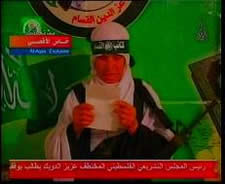
“That peace means between Palestinians and Israelis, between Syria and Israel, and between Lebanon and Israel,” Mitchell stated.
Mitchell also called on the full normalization of relations between Israel and all of the countries in the region.
The term comprehensive peace came up often in Mitchell’s outlining of US expectations for the Middle East region to press reporters. “Comprehensive peace is the only way to guarantee stability, security and prosperity for the states in the region,” Mitchell said in an AP report.
This was Mitchell’s second visit to Syria in the past two months. Mitchell is the highest-level U.S. administration official to visit Damascus since 2005.
Behind the positive attitude and optimistic language that has characterized the Obama administration’s quest to achieve peace in the region-one that has been unsuccessfully attempted by US presidents before him– lays a missing component. Until this point, there has been no official US address of the on-ground reality. What is being said during these political visits and what is actually taking place on the ground to promote regional peace, are vast oceans apart.
The June edition of Al-Fateh, Hamas’s bi-weekly publication for children is perhaps one of the best indicators of this massive par. According to the Israel Intelligence and Terrorism Information Center (IICC), Al-Fateh, a London-based publication, inculcates Palestinian children with the ideas of radical Islam, hatred of Israel and the Jewish people, and even the West. Every Al-Fateh issue praises a shahid (martyr) belonging to the Izz al-Din al-Qassam Martyrs Brigades, Hamas’s military-terrorist wing.
June’s issue featured a photograph of the 61st anniversary of the nakba (the Palestinian catastrophe in reference to the establishment of the State of Israel). The image shows killed Palestinian children beneath the blood-dripping Israeli-American handshake. The issue also features a poem where an angry Palestinian child calls to avenge and liberate Palestine.
Photos of Palestinian children dressed as Hamas soldiers have appeared in earlier issues during 2009 and martyrdom is a reoccurring theme.
In the past, Al-Fateh has formerly praised suicide bombers responsible for the murder of Israeli citizens including Sa’id al-Hutari the perpetrator of the suicide bombing attack in Tel-Aviv’s Dolphaniarium disco, where 21 people, mostly Israeli teenagers were killed and 83 injured.
Al-Fateh’s editor and founder is believed to be Abdallah al-Tantawi, a senior figure in Syria’s Muslim Brotherhood in the mid-1990s, who goes by the name of Sami al-Halabi. According to the IICC, an article published in an Islamic newspaper in Germany (Al-Ra’ed, February 2005) stated that al -Tantawi founded the al-Fateh publication in 2002 while cofounding several other children publications.
Moreover, following Operation Cast Lead, Hamas immediately began rebuilding the Al-Aqsa TV station, which is part of the Al-Aqsa media network. The network includes a television channel, radio broadcasts, the Al-Aqsa information authority, journalism courses, and the “Asda” City for Artistic and Media Production, otherwise known as “Hamaswood.”
(IICC’s Terrorism and Media, July 2009).
Hamas’s first full-length movie premier was held on July 17 in the Gaza Strip and was attended by Ismail al-Haniya, head of the Hamas administration and based in Damascus. Written by Gazan head of Hamas, Mahmoud al-Zahar, the movie tells the story of Hamas’s Izz al-Din al-Qassam brigades commander killed in battle with IDF forces in 1993. Production costs for the movie reached $200,000.
A new Hamas radio station went on air on March 15, 2009, and is called Al-Qur’an Al-Kareem (“the holy Koran). Ismail al Haniya personally used the radio station to send Islamic messages. The Hamas’s student wing, al-Kutlah al-Islamiyyah, has also joined Facebook and Twitter to spread its political line.
Shortly before Operation Cast Lead, the external Hamas leadership in Damascus opened the Al-Quds TV in Beirut, which is owned by the Al-Quds radio and TV company in London and is comprised of Arab and Palestinian businessmen and media personnel. Al- Quds TV recently dismissed an Algerian journalist, Yehya Abu Zakaria for revealing that the station received Iranian funding. He also accused its directors of low-level programming while using funds for “lives of luxury.”
In the realm of Islamic media, the Obama administration’s visions of Middle East peace are not a welcome news item. It is obvious that the media plays a powerful role in shaping public perception and opinion. If a truly “comprehensive of peace” for Israel and her neighboring countries is to transpire, the Islamic media must embrace Mitchell’s vision. This has yet to happen.









